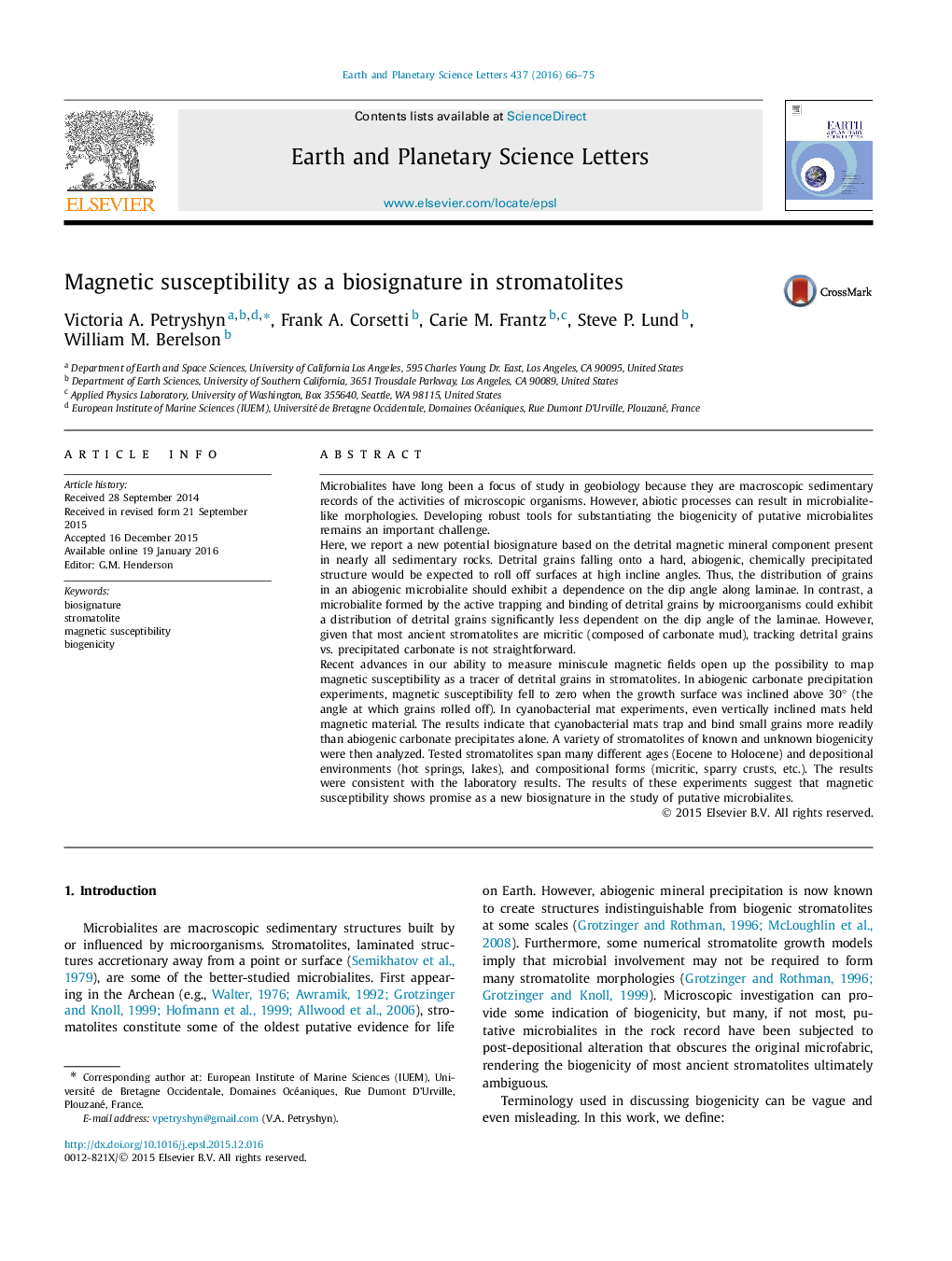| Article ID | Journal | Published Year | Pages | File Type |
|---|---|---|---|---|
| 6427670 | Earth and Planetary Science Letters | 2016 | 10 Pages |
Abstract
Recent advances in our ability to measure miniscule magnetic fields open up the possibility to map magnetic susceptibility as a tracer of detrital grains in stromatolites. In abiogenic carbonate precipitation experiments, magnetic susceptibility fell to zero when the growth surface was inclined above 30° (the angle at which grains rolled off). In cyanobacterial mat experiments, even vertically inclined mats held magnetic material. The results indicate that cyanobacterial mats trap and bind small grains more readily than abiogenic carbonate precipitates alone. A variety of stromatolites of known and unknown biogenicity were then analyzed. Tested stromatolites span many different ages (Eocene to Holocene) and depositional environments (hot springs, lakes), and compositional forms (micritic, sparry crusts, etc.). The results were consistent with the laboratory results. The results of these experiments suggest that magnetic susceptibility shows promise as a new biosignature in the study of putative microbialites.
Related Topics
Physical Sciences and Engineering
Earth and Planetary Sciences
Earth and Planetary Sciences (General)
Authors
Victoria A. Petryshyn, Frank A. Corsetti, Carie M. Frantz, Steve P. Lund, William M. Berelson,
